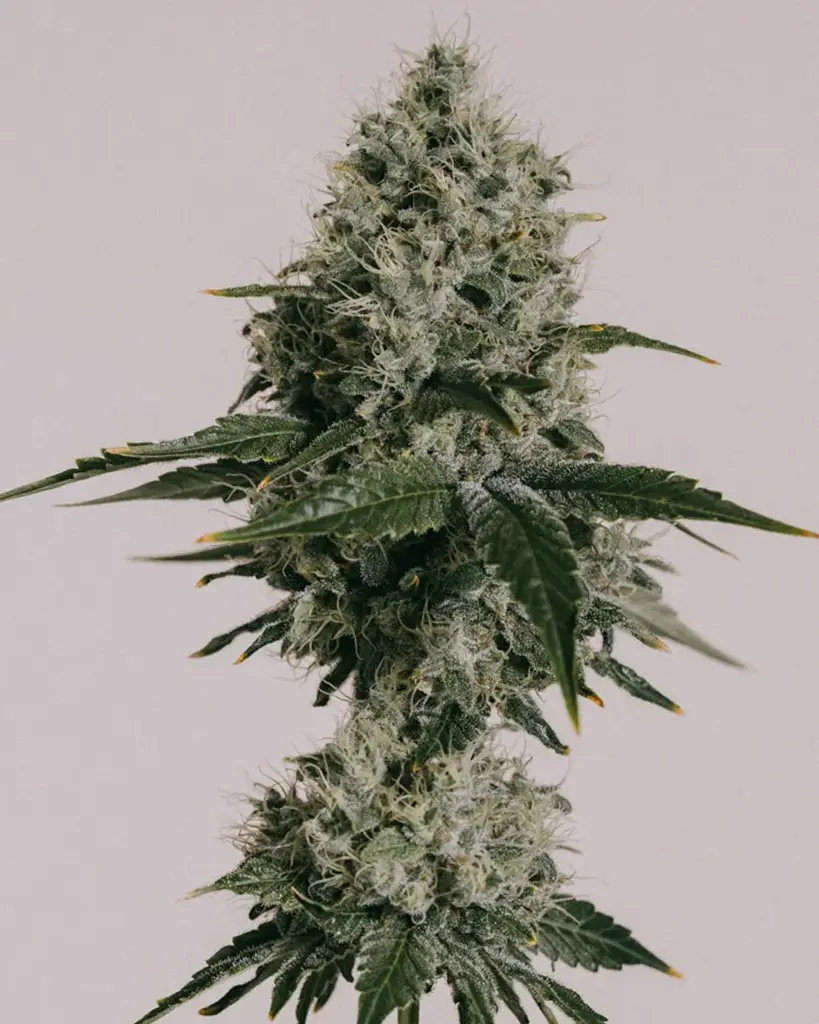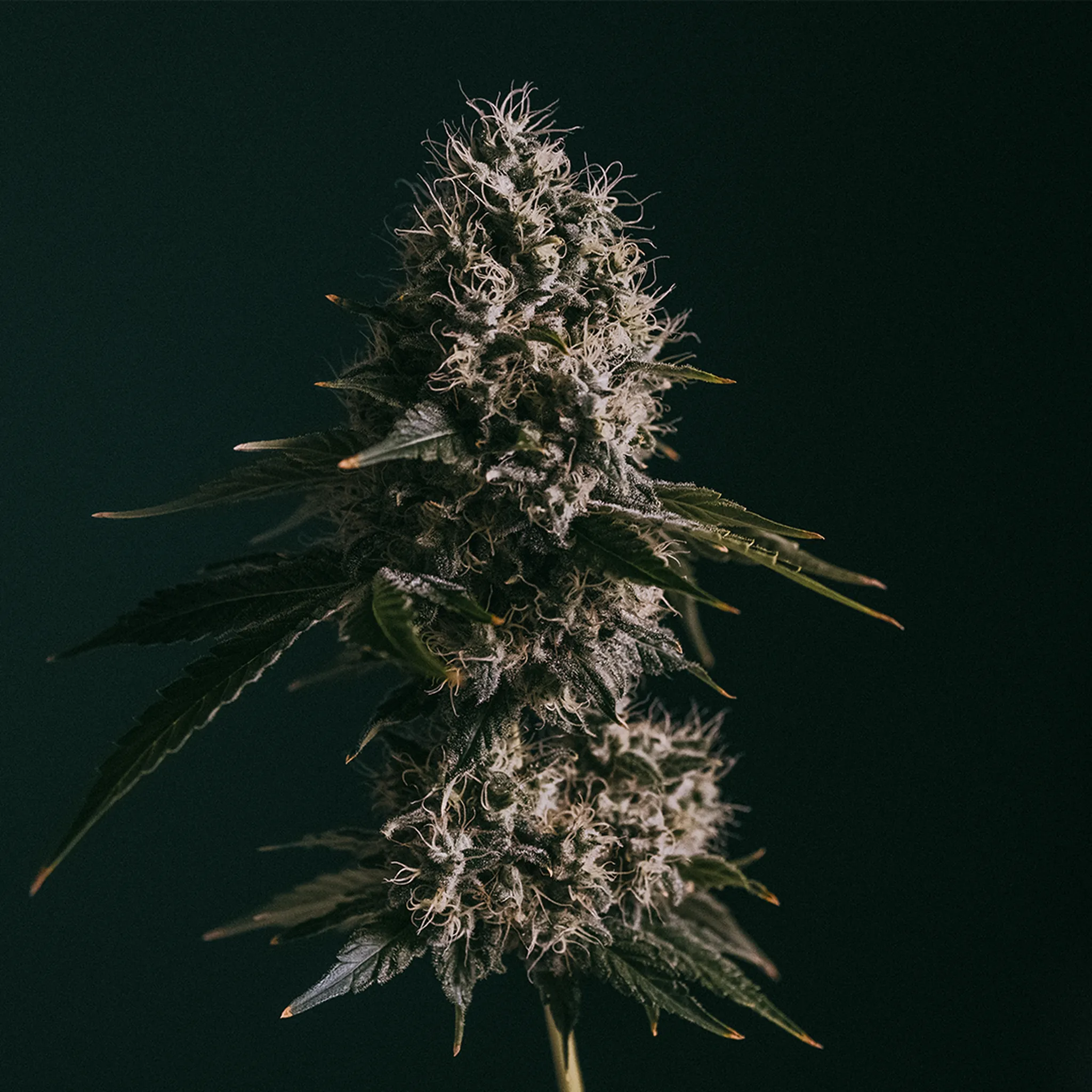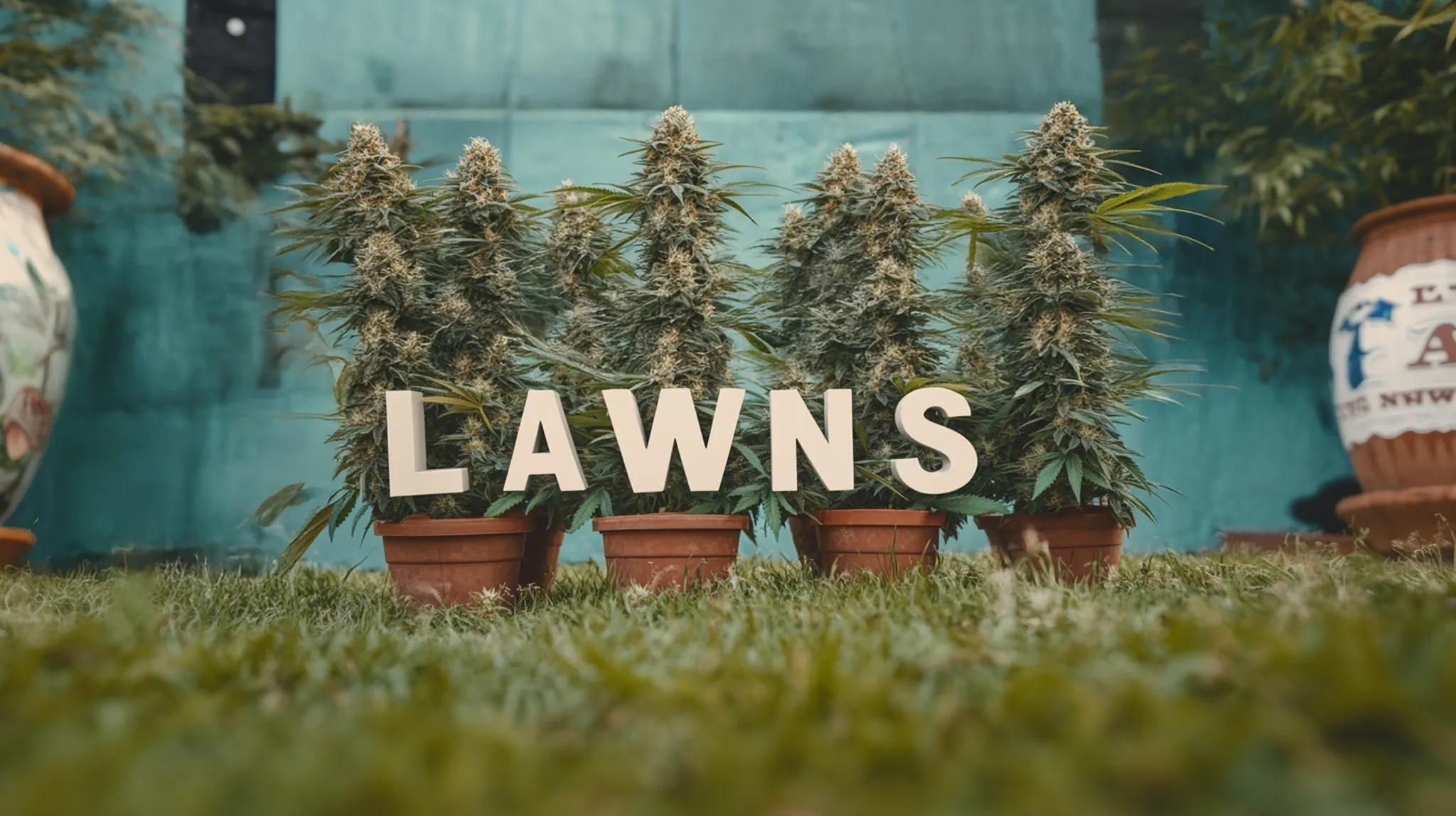
A Beginner’s Guide To Companion Plants for Cannabis
Cannabis is such a great friend to us – for many, it’s one of our true lifelong companions! One of the benefits of growing your own weed is that you can learn to grow other plants along the way. And when this personal growth leads to better outcomes for your cannabis harvest? That’s synergy at work.
Table of contents
What Are Companion Plants? (And Why Should You Care?)
Companion plants are like the backup crew for your cannabis garden. They work alongside your cannabis plants, keeping pests in check, improving soil, and sometimes even giving your cannabis a little extra boost. They attract helpful bugs, keep bad ones away, and help the soil stay happy by adding certain nutrients.
Companion plants are ones that make ‘good neighbors’ in the garden. Throughout agricultural history, folks noticed that certain plants seemed to “like” or “dislike” growing near one another.
Science now confirms some of those observations. While we can’t translate all of it, we understand that in complex, diverse, and wild ecosystems, a whole lot of communication and resource-sharing is going on.
Introducing beneficial plant partners to the cultivation environment can make life easier for both the cannabis and the grower.
Our Bestsellers
The Benefits of Companion Planting for Cannabis
Everything you do to create more supportive, balanced, healthy environments for your cannabis can lead to better harvests. While it may be hard to draw a direct line between companion planting and guaranteed improvement in yield, one of the best reasons to diversify your grow space is that you’ll get to share some of the responsibility for environmental control.
The benefits of companion planting include:
Supporting beneficial microbes
Improving soil structure
Improving nutrient availability
Attracting and housing beneficial insects
Deterring or redirecting insect pests
Helping you to mask cannabis plants from sight among the “other plants”
If you can get any of these outcomes by making just a few small, mostly low-maintenance additions to your garden, why wouldn’t you try it?
Best Companion Plants for Cannabis (Beginner Friendly)
The list of companion plants that’ll team up with your cannabis to keep it healthy, happy, and growing strong is long, very long. To help you see the weeds through the grass, I’ll keep it simple and list the most common ones:
Aromatic Herbs: Spearmint, peppermint, catnip, oregano, basil, sage, lavender
Aster-family Flowers: Marigolds, chamomile, yarrow, local varieties
Apiaceae Family Plants: Dill, parsley, cilantro, carrot, fennel, parsnip
Alliums: Garlic, onions, chives
Legumes: Peas, beans, clover, alfalfa, winter wheat
Most plant families have one or two you’ll find especially appealing. Take these recommendations as a general guide to choice the companion plants that will bring your cannabis plants happiness!
Aromatic herbs: Spearmint, Peppermint, Catnip, Oregano, Basil, Sage, Lavender


Why: Prized for their strong scents and flavors, common kitchen herbs repel many plant-eating insects.
How: In pots. Many herbs are notorious for spreading through thick roots that grow through the soil and pop up in new places (rhizomes), taking over the garden.
For cannabis, it’s not a huge issue, but for easy maintenance, keep only the woodier ones (sage, lavender), and basil in your raised beds. The softer ones can have pots of their own (or you can let them become a groundcover, releasing pest-repelling terpenes with every step!).
Aster-family Flowers: Marigolds, Chamomile, Yarrow

Why: A patch of mixed flowers will attract, feed, and provide a breeding ground for beneficial wasps and other insect predators.
How: Calendula, aka Pot Marigold, is an easy and beautiful aster to grow from seed. Sow ¼” deep, about 6-18” apart, in early spring. For continuous re-growth, put more seeds in the ground every couple of weeks until summer. Let the heads dry up and scatter their seeds naturally for a self-perpetuating patch.
Apiaceae Family Plants: Dill, Parsley, Cilantro, Carrot, Fennel, Parsnip


Why: Like their daisy-shaped friends in the Aster group, these plants also have flowers that attract beneficial insects. Ladybugs are a favorite in the cannabis garden due to their big appetite for aphids
How: Seeds can be sown in the springtime before cannabis seedlings are transplanted into beds. Some varieties will “self-seed” easily if allowed to develop mature flowers, “volunteering” the following year with no conscious effort by the grower. Since dill, parsley, and cilantro are popular kitchen herbs, it’s common to find transplant-ready starts at your local garden center or plant sale.
Tip: I tend not to bother growing carrots, fennel, and parsnips, because I don’t like them all that much. You have to wait for their flowers (passing the point of their peak harvest time as vegetables) to get the main benefit from companion planting. But if YOU like ‘em, go ahead and sow a border row in the early spring. As you harvest, leave one in the ground every 12” or so apart, and let it go through its life cycle. Keep these roots in place, and next spring they’ll send up blooms – an early friend to many insect-eating insects.
Alliums: Garlic, Onions, Chives

Why: Members of this family release natural chemicals into the soil that encourage other plants (i.e., your cannabis) to recruit beneficial bacteria. These bacteria, in turn, work against the growth of wilt-causing Verticillium fungi. The overall effect is the creation and maintenance of a “disease suppressive” rooting environment.
How: There are numerous perennial onions and chives that will establish and multiply in your garden. Starting from seed may be done by collecting and re-scattering seed in the autumn, allowing them to overwinter and emerge naturally the following spring.
Tip: Unlike the plants grown for their strong scents and flowers, onion-family companions do their job underground – so you want them in the same soil as your cannabis. Generally, red, white, and yellow onions can be harvested young and eaten like scallions or leeks, and they’re fairly cheap to buy as “seed onions”, also called “sets”. If the white parts and roots are undisturbed, most will regrow after being cut.
Legumes: Peas, Beans, Clover, Alfalfa, Winter wheat

Why: This group of plants participates in a cycle that harvests Nitrogen from the air and puts it back in the soil, where fast-growing, vegetative plants easily absorb it. They contribute to soil structure and quality.
How: Replace grass with low-growing white clover, especially on the paths between garden beds. Grow other “green manures” in rotation with cannabis in the soil, trimming them down before transplanting weed seedlings in the spring.
How to Use Companion Plant With Cannabis (Step-by-Step)
The main goal of companion planting is to promote diversity while keeping your top crop happy.
Interplanting, or creating a ‘polyculture’, is when you grow more than one species in the same soil. Cannabis is pretty easygoing about sharing its space with many different kinds of plants.
Start Interplanting in 3 Easy Steps:
Get your hands on some easy-to-grow herbal companions. My favorite ones are perennials that overwinter in my area.
Most garden centers have little 4-packs of thyme, oregano, rosemary, and chives, or a similar mix. If you’ve built raised beds, go ahead and pop one or more of these plants in the corners (keep the chives in their clump).
If growing your weed in pots, give each herb a container of its own, and arrange them around your cannabis.Onion sets can be easily grown in the same container as cannabis. Stick ‘em in the soil in a circle or lines around a transplanted seedling. Trim off the tops or harvest the onions young, and sow another group at about the time when your plants are transitioning from veg to flower.
They don’t need to be dug in very deeply, so you won’t disturb the cannabis roots.Beautify your garden with flowers. Check local seed companies or nurseries for wildflower mixes and lure helpful insects with a season of blooms. Use hanging baskets, moveable pots, and permanent beds to place them throughout your cannabis garden.
Outdoor Grow?
Common Mistakes to Avoid When Planting Companion Plants
It’s hard to get it radically ‘wrong’, but there are a few things to look out for. The main ‘mistakes’ with interplanting cannabis are overcrowding, blocking light, and attracting pests. Keep big, sprawling plants like vines in check, and steer clear of squash, which can bring in disease and unwanted bugs.
Overcrowding your cannabis.

Check the seed package for the type of plant you’re thinking of growing alongside cannabis to find out how big it’s going to get. Vine-type tomatoes, for example, can become sprawling, and they’re strong competitors for nutrients.
Shading out your cannabis.

Locate vertical gardens north or west of your garden to minimize light loss during the majority of the day.
Tip: Growing lush, light-blocking vines on the west side of the garden can sometimes have a beneficial effect. As fast-growing peas or beans begin to throw shade over photoperiod cannabis in the later part of the day, it can encourage flowering earlier in the season. This affords more weeks for bud development before cold weather sets in.
Fostering disease and pests.

Squash, with their big leaves, are notorious for creating a breeding environment for downy mildew. Nasturtiums and mustard are good ‘generalist’ companions, because they lure bugs like aphids away from other plants. It’s not ideal to have any of these within touching distance of cannabis.
Bonus: Extra Benefits of Companion Plants
Homegrown natural bug sprays. Many plant companions are good for making homemade sprays that can be used to deter common cannabis pests, as well as insects that bother people and pets.
Food and medicine. Good companion plants are often flavor-packed edibles or herbs with long histories of use for health support (or both!).
Conserving local species diversity. In whatever amount of space you have outdoors, you can make a little food and shelter available for beneficial insects. Choose indigenous varieties whenever possible, as they are more likely to be good matches for the local bugs you want to attract.
Changing the Look and Smell of the Garden. Cannabis is an eye-catching plant, and can really bring the funk. A scattering of different shapes and colors, and a mixture of other strongly-scented plants, can add subtlety to your cannabis cultivation.
Personal Growth. Taking care of a variety of plants gives you more practice as a cultivator. With fresh ingredients on hand, you can also develop your skills as a cook and herbalist, becoming more creative and self-sufficient in the process.
Final Thoughts
Companion planting is a tradition that makes sense – harmonious growing environments are naturally abundant and do much of their own self-management. Most herbs and flowers that make good companions are even easier to grow than cannabis, so have fun adding scents, flavors, and colors to the space.
Until next time, may you and your garden keep growing together, ever higher!
Research referenced for this article:
Connelly, G., Rothberger, J. and Ellison, S. (2025), Evaluating Ecosystem and Agronomic Services Provided by Companion Cropping in Hemp (Cannabis sativa L.). Journal of Sustainable Agriculture and Environment, 4: e70055. https://doi.org/10.1002/sae2.70055
Chalker-Scott, L. (2023). Gardening with companion plants (, Ill.). Washington State University Extension. https://doi.org/10.7273/000006216

Xavier Kief
Xavier Kief, a fierce cannabis advocate & educator, merges science & joy in cultivation. Expert in regenerative growing, mycology & activism
Continue Reading
You might also find these interesting.













